When can we go out to repair the trails? Since the Eagle Creek fire began last September, we have fielded many variations on this question and received thousands of volunteer inquiries from groups and individuals eager to make fire-damaged areas of the Gorge accessible again.
Friends has teamed up with Trailkeepers of Oregon, Pacific Crest Trail Association, and Washington Trails Association to organize Eagle Creek fire stewardship work parties. Working in cooperation with the U.S. Forest Service and Oregon State Parks, the team has begun initial work and is preparing to roll out more volunteer work parties this spring and summer.
Sign Up for Fire Stewardship
This week, Friends' new Stewardship Volunteer Coordinator Mika Barrett and Trailkeepers of Oregon Executive Director Steve Kruger answered questions about the work Gorge Trails Recovery Team volunteers will do, as well as the current conditions in the fire-affected areas.
1. Mika, what needs led to the creation of your brand new position, and what role do you play with the Gorge Trails Recovery Team?
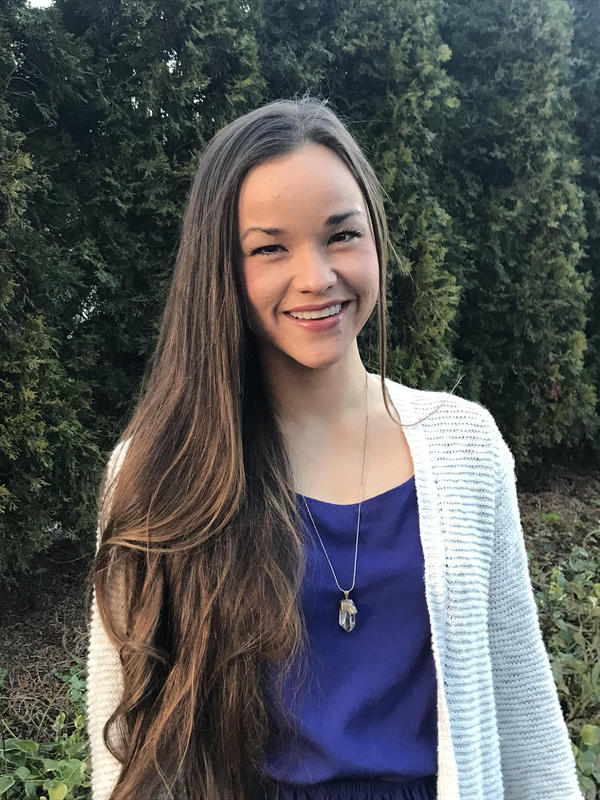 Mika Barrett:
Mika Barrett: After the Eagle Creek fire began, Friends received an outpouring of community support, with over 2,000 individuals and groups contacting us to solicit ways of volunteering. The Stewardship Volunteer Coordinator position was created to mobilize and train the fire recovery volunteers.
Friends’ stewardship program complements the trail work being done by our partner organizations, Trailkeepers of Oregon, Washington Trails Association, and Pacific Crest Trail Association. As these organizations focus on repairing and rebuilding a trail system in the Gorge, our stewardship volunteers help – in conjunction with the U.S. Forest Service and Oregon State Parks – with noxious weed identification and removal for the buffer zones of the burned areas. A major post wild-fire concern is the spread of invasive plant species. Noxious weeds degrade water quality, threaten wildlife habitat, and smother native plants' ability to flourish.
The stewardship work will also address the concern of noxious weeds spreading by shoes, cars, etc. once the fire-affected trails are reopened. Friends will host work parties to remove invasive weeds on the trails, plant native species, and promote public education.
2. What skills/experience do volunteers need to bring to the Gorge Trails Recovery Team?
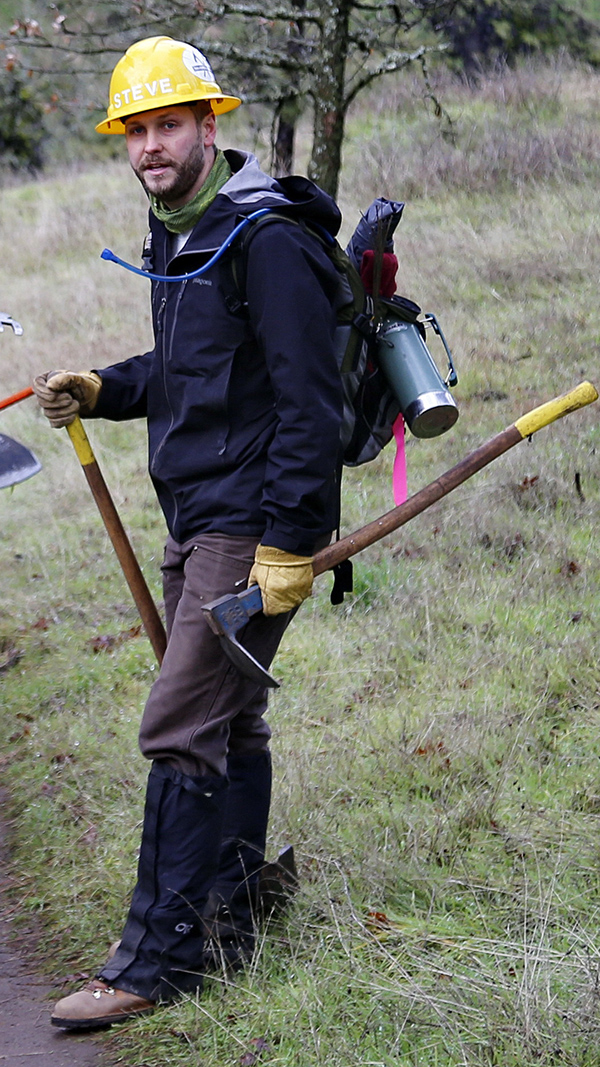 Steve Kruger:
Steve Kruger: Trailkeepers of Oregon has a vested interest in taking folks out on trails to share how they can give back, moving from trail users to trail stewards. Our program for trail stewardship is only as strong as the volunteers leadership that sign on to learn more; learning our methods for running trail crews and advanced skills in trail building and design are things we are always cultivating in our volunteers. Trailkeepers of Oregon is on the cusp of hosting more trail workshops to attain these skills; stay tuned for those opportunities as they come along. Even if people only come out to one work party, we feel that small glimpse gives the opportunity to recognize what goes in to taking care of trails and how special these places are. It will take a scrappy crew of dedicated folks to keep them open and safe.
MB: All are welcome, from the novice to the expert. From a stewardship perspective, we will provide trainings noxious weed removal techniques for those who are new to this work, and welcome all who are interested and committed to become trained crew leaders. Our stewardship volunteers can expect to learn the best practices in the areas of invasive plant identification, reporting, and removal.
3. In general, what kind of work will volunteer crews be doing?
SK: Work crews will generally be limited to groups of 12 volunteers. Following good safety guidance and direction in trail building standards requires small, but mighty groups. While we are so happy to have the outpouring of support form thousands of eager volunteers, it is a challenge to ensure safety and quality of work without a good ratio of experienced leaders to small groups of volunteers. For trails, Pacific Crest Trail Association and Trailkeepers of Oregon will be working on the east and west side of the fire-affected areas. Friends will be complementing this work by coming in to identify any natural resource concerns around invasive species being introduced in disturbed areas of the fire and snuffing those plants out before they take hold on the area. The trails we are working on have not had the level of care we are working to achieve. Rather than simply coming in and doing a quick clearing, we are trying to improve the trails so they are far better than they had been in quite some time. We aren't sure when trails will open but when they do, visitors will experience trails built to a high quality - the wait will be worth it!
4. What will be the process by which people who sign up for the Gorge Trails Recovery Team are organized into work parties?
MB: Volunteers are directed to sign up for the Gorge Trails Recovery Team, so we can align them with volunteer opportunities that match their interests and skill sets. As members of the team, our volunteers will receive communications about upcoming volunteer events, educational messages, and other ways to remain connected with the recovery efforts. Friends will post our stewardship work parties online and direct volunteers to sign up. They will also receive emails from our partner organizations of those groups’ upcoming trail work parties.
5. Where in particular do you foresee Gorge Trails Recovery Team crews doing work?
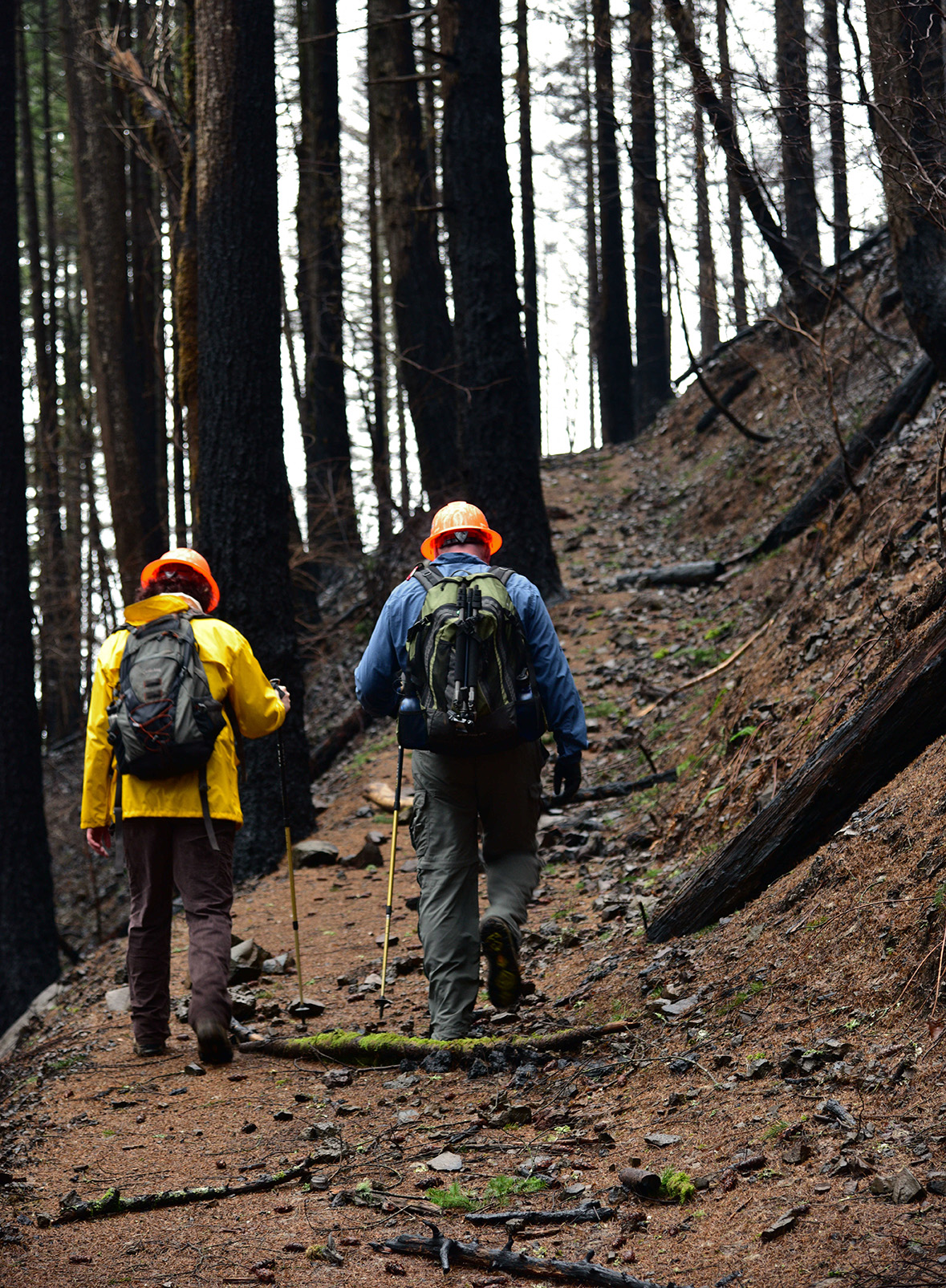 SK:
SK: Currently we are working in the least damaged zones of the fire-affected area. While TKO is leading the efforts on the west side, near Angel's Rest and heading east, the PCTA is working near Cascade Locks to the PCT and Herman Creek area. These areas are great for us to go in and work safely while other areas are assessed for far greater challenges ahead. Meanwhile, Washington Trails Association is working on trails on their side of the river; we recognize that while the fire-affected area is closed, much of the other sites across the river have seen a huge jump in visitation. We recognize that the Gorge visitor doesn't see the boundaries of state and public land managers like we do. The motivation to direct our efforts with "systems-thinking" of outdoor recreation in the region will require every partner group to step up their work.
6. Steve, could you describe the trail conditions you’ve seen on assessment walks into burned areas with partner leaders? Why can’t the public go on these trails anytime soon?
SK: It has been very hard for people who are only seeing a small glimpse at one work party to understand the scope and variation of trail conditions. Certainly, segment by segment there are lengths of trail that are relatively unscathed. Meanwhile, those trails lead directly to large rock slides, dangerously unstable soil and dead stand trees that are ready to fall. It has been very hard for people who are only seeing a small glimpse at one work party to understand the scope and variation of trail conditions.
The natural recovery and settling of these fire-affected areas is important, far greater than going in and dropping significant dead stand and allowing people to risk intermittent rock fall that can happen at any point. Each area is drastically different in the damages incurred. Some trail areas are as simple as what’s caused by a hard winter storm, while others are just gone – covered by rock and debris. All of the hills that have been burned clean are moving. Large trees, which we have started to call torpedoes, sit ready to jettison down the mountain at any point. Rock, both big and small, is rolling down in fits and starts because there is no moss to hold it in place. In one area you can feel completely safe, while around the next corner it is a very scary and uncertain mess.
7. What advantages does collaboration between partner groups and agencies offer?
SK: As Trailkeepers of Oregon grows to fill gaps in trail stewardship and advocacy in the Columbia River Gorge, we see this collaborative approach integral to making sure we solve the many problems that have been happening through the region: congestion at prized sites, a lack of stewardship ethics among some Gorge visitors and an extremely stretched public land management conglomerate that is eager for partners who can help.
Part of the synergy between Friends of the Columbia Gorge and Trailkeepers is that we complement each other’s work. While our group is leading the efforts with trails recovery and stewardship in Oregon, Friends is clearly interested in focusing efforts on land conservation and natural resource stewardship on both sides of the Columbia River. Our group and Pacific Crest Trail Association's role in responding to the Eagle Creek fire is working on rebuilding Gorge trails and establishing continued care of these connections to nature. Rather than competing for that role for trails stewardship, Friends is right there working in partnership to combat invasive species introduction in the fire-affected area and lending a hand in natural recovery.
Trail stewardship programming is our bread and butter and early on Friends understood that by supporting Trailkeeper's growth, Friends could focus on other Gorge priorities for protecting and enhancing this significant place. The Gorge Trails Recovery Team has brought together key players to think holistically about the Columbia Gorge trails system. For a very long time, partner groups had worked on trails stewardship irrespective of others groups doing very similar work, sometimes overlapping where resources could be gathered together more collaboratively. While we certainly could go it alone and do just fine, even a small bit of time to collaborate has yielded far greater results thus far.
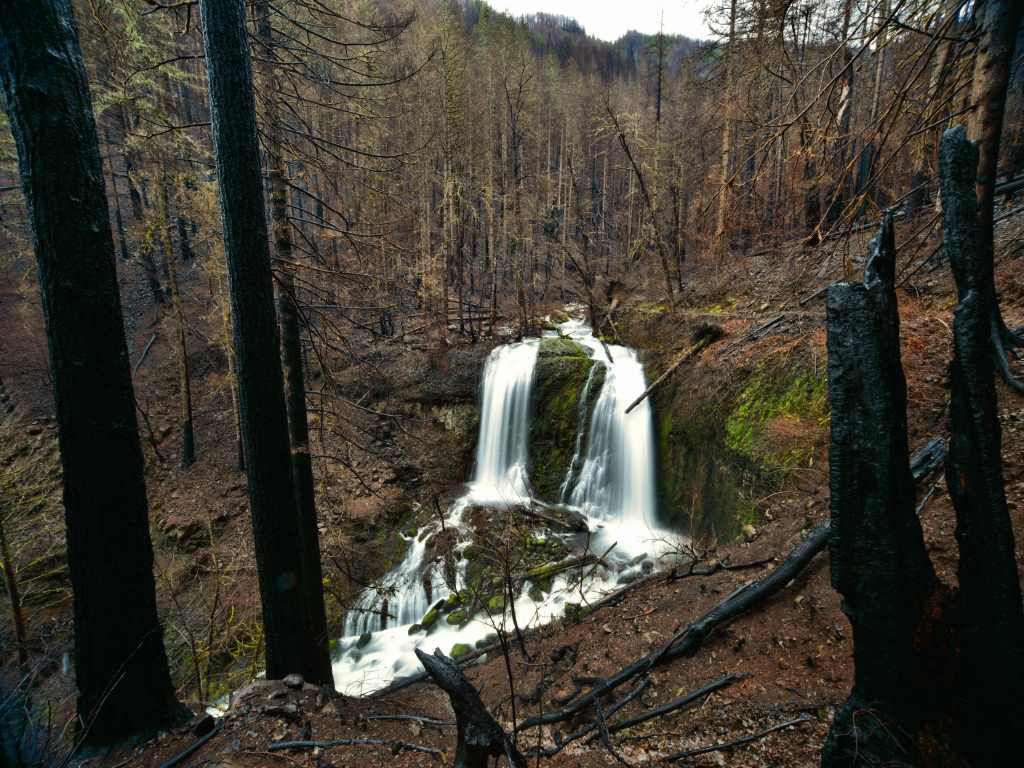
8. What conditions need to be verified before the public can go back on the affected trails?
SK: This question is above my pay grade, but I really am glad that things are closed now so our collective group and partnering land managers can come together and think about what it means to venture off into these forests safely, to be in consultation with the general public on what this place can offer in the future.. The public will be out there again someday, but the landscape and experience may be far different than what we had before. We can all be hopeful for it being something equal in beauty, as the ferns and flowers have already returned in areas that I have seen.
Photo credits (top to bottom):
Friends of the Columbia Gorge volunteer stewardship coordinator Mika Barrett
(photo courtesy of Mika Barrett)
Trailkeepers of Oregon executive director Steve Kruger at a trailwork party at Friends' Mosier Plateau land trust property, Jan. 2018
(photographer: Micheal Drewry)
Survey team assesses damage along Upper McCord Creek Trail, Jan. 2018
(photographer: Miranda Mendoza, Oregon State Parks)
Upper McCord Creek Falls, surrounded by burned forest, Jan. 2018
(photographer: Miranda Mendoza, Oregon State Parks)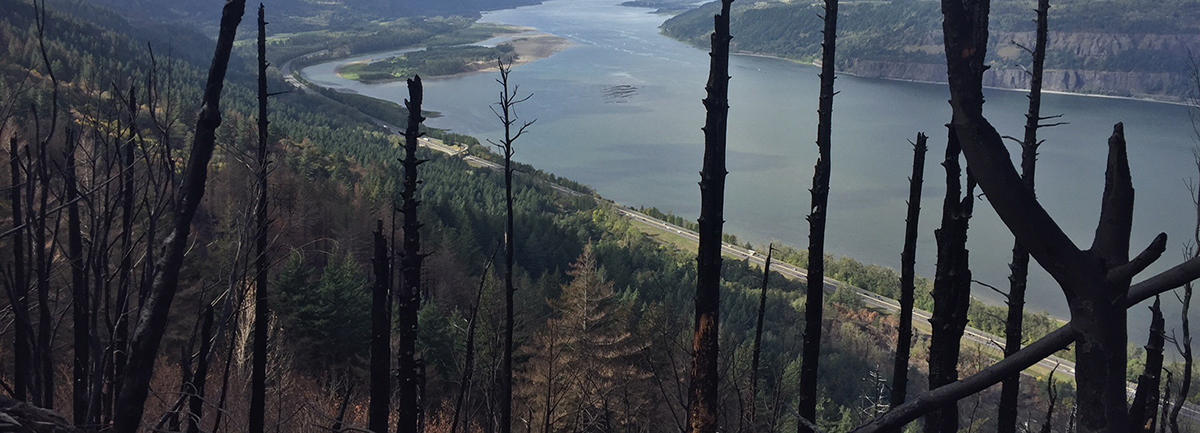
 Mika Barrett: After the Eagle Creek fire began, Friends received an outpouring of community support, with over 2,000 individuals and groups contacting us to solicit ways of volunteering. The Stewardship Volunteer Coordinator position was created to mobilize and train the fire recovery volunteers.
Mika Barrett: After the Eagle Creek fire began, Friends received an outpouring of community support, with over 2,000 individuals and groups contacting us to solicit ways of volunteering. The Stewardship Volunteer Coordinator position was created to mobilize and train the fire recovery volunteers.
 Steve Kruger: Trailkeepers of Oregon has a vested interest in taking folks out on trails to share how they can give back, moving from trail users to trail stewards. Our program for trail stewardship is only as strong as the volunteers leadership that sign on to learn more; learning our methods for running trail crews and advanced skills in trail building and design are things we are always cultivating in our volunteers. Trailkeepers of Oregon is on the cusp of hosting more trail workshops to attain these skills; stay tuned for those opportunities as they come along. Even if people only come out to one work party, we feel that small glimpse gives the opportunity to recognize what goes in to taking care of trails and how special these places are. It will take a scrappy crew of dedicated folks to keep them open and safe.
Steve Kruger: Trailkeepers of Oregon has a vested interest in taking folks out on trails to share how they can give back, moving from trail users to trail stewards. Our program for trail stewardship is only as strong as the volunteers leadership that sign on to learn more; learning our methods for running trail crews and advanced skills in trail building and design are things we are always cultivating in our volunteers. Trailkeepers of Oregon is on the cusp of hosting more trail workshops to attain these skills; stay tuned for those opportunities as they come along. Even if people only come out to one work party, we feel that small glimpse gives the opportunity to recognize what goes in to taking care of trails and how special these places are. It will take a scrappy crew of dedicated folks to keep them open and safe.
 SK: Currently we are working in the least damaged zones of the fire-affected area. While TKO is leading the efforts on the west side, near Angel's Rest and heading east, the PCTA is working near Cascade Locks to the PCT and Herman Creek area. These areas are great for us to go in and work safely while other areas are assessed for far greater challenges ahead. Meanwhile, Washington Trails Association is working on trails on their side of the river; we recognize that while the fire-affected area is closed, much of the other sites across the river have seen a huge jump in visitation. We recognize that the Gorge visitor doesn't see the boundaries of state and public land managers like we do. The motivation to direct our efforts with "systems-thinking" of outdoor recreation in the region will require every partner group to step up their work.
SK: Currently we are working in the least damaged zones of the fire-affected area. While TKO is leading the efforts on the west side, near Angel's Rest and heading east, the PCTA is working near Cascade Locks to the PCT and Herman Creek area. These areas are great for us to go in and work safely while other areas are assessed for far greater challenges ahead. Meanwhile, Washington Trails Association is working on trails on their side of the river; we recognize that while the fire-affected area is closed, much of the other sites across the river have seen a huge jump in visitation. We recognize that the Gorge visitor doesn't see the boundaries of state and public land managers like we do. The motivation to direct our efforts with "systems-thinking" of outdoor recreation in the region will require every partner group to step up their work.
